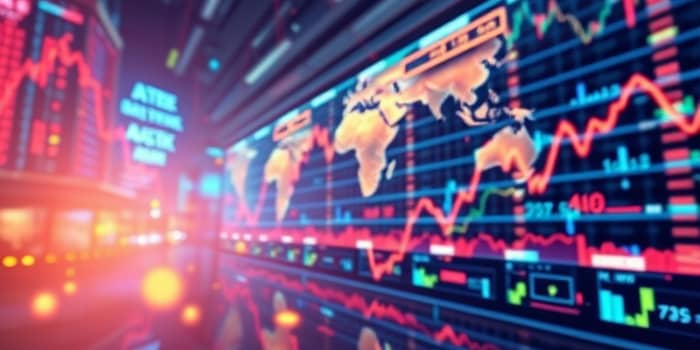
In an era where nanoseconds can define success, algorithmic trading has emerged as the backbone of modern finance. By leveraging complex computer programs, market participants execute orders with unprecedented speed and accuracy, transforming how capital moves across global exchanges. From the bustling floors of Wall Street to decentralized cryptocurrency markets, algorithms reign supreme, orchestrating trades that follow strict rules without a moment’s hesitation.
As traditional traders grapple with emotional biases and manual constraints, algorithmic strategies offer a compelling alternative. They harness data, statistical models, and automation to navigate volatility and uncover hidden opportunities. This article explores the depths of algorithmic trading, examining its mechanics, benefits, leading strategies, and future horizons in the digital age.
At its essence, algorithmic trading refers to the use of software programmed to follow specific instructions for placing trades. These instructions can encompass order timing, price limits, and trade size, all grounded in quantitative models or technical indicators. For example, a script might be set to buy a currency pair when a short-term moving average crosses above a longer-term one, then automatically exit when conditions reverse.
By translating complex strategies into code, traders can rely on pre-defined rules and strategies that remove manual intervention. Algorithms monitor multiple markets simultaneously, scanning for patterns and executing orders in fractions of a second. This approach ensures consistency and allows for continuous market engagement, regardless of time zones or asset classes.
Algorithmic trading began its ascent in the late 1990s, propelled by advances in computing power and electronic trading platforms. From modest beginnings, it now commands over 70% of U.S. equity market volume and more than 80% of forex transactions as of 2025. Hedge funds, proprietary trading firms, and investment banks deploy sophisticated systems to capture micro inefficiencies and contribute to overall market liquidity.
In the United States, algorithms drive efficiency and tighten bid-ask spreads, benefiting all participants. On global venues—from European exchanges under MiFID II to Asia-Pacific markets—the automated approach has reshaped trading dynamics. Even retail investors can now tap into simplified algorithmic platforms, blurring the line between institutional and individual traders.
Whether for institutions or retail participants, algorithmic trading delivers a range of powerful advantages. By harnessing technology, traders can:
Algorithms deliver speed and accuracy of executions that manual traders cannot match, while reducing unnecessary transaction costs significantly. Together, these features drive disciplined approaches and eliminate human hesitation and errors. Properly implemented systems also support extensive simulation phases, allowing traders to optimize performance through rigorous backtesting before committing real capital.
By 2025, a diverse array of algorithmic strategies power trading floors and cloud servers alike. Each method addresses specific market scenarios, asset classes, and risk tolerances, ensuring that participants can align execution with their objectives.
Each strategy demands specific data inputs and risk controls. For instance, high-frequency trading requires ultra-low-latency networks, while machine learning approaches thrive on vast alternative datasets such as social sentiment or satellite imagery.
Implementing algorithmic trading requires a blend of programming expertise and robust infrastructure. Popular languages include Python, R, and C++, along with proprietary scripting tools offered by trading platforms. Real-time data feeds, message queuing systems, and co-location services near exchange servers ensure minimal latency.
Developers must also build resilient systems capable of handling network disruptions, hardware failures, and software bugs. Comprehensive logging, alerting mechanisms, and fallback procedures are essential to prevent runaway trades and protect capital under all market conditions.
As algorithmic trading continues to expand, so does the demand for skilled professionals. Career paths include:
Roles in this field often come with performance-based compensation and profit-sharing incentives. Job growth rates have averaged 10–15% annually in major financial hubs, reflecting the increasing reliance on data-driven decision-making and automated systems.
Despite its advantages, algorithmic trading carries inherent risks. Model overfitting can produce strategies that excel in backtests but falter in live markets. Large orders may move prices if not executed carefully, while technical failures can lead to unintended losses.
Robust risk management frameworks are critical. Firms enforce limits on maximum drawdowns, implement pre-trade risk checks, and deploy kill switches to pause or halt trading if anomalies occur. Ongoing monitoring and periodic model reviews help adapt to changing market regimes and avoid cascading failures.
Global regulators have intensified oversight of automated systems to uphold market integrity. In the U.S., the SEC and CFTC mandate pre-trade risk controls, record-keeping, and rapid incident reporting. Europe’s MiFID II framework imposes registration requirements, testing protocols, and strict transparency obligations.
Regulators now demand transparent oversight and emergency kill switches to safeguard markets. Compliance teams work closely with technologists to document algorithms, validate performance, and respond swiftly to potential market disruptions.
Looking forward, algorithmic trading will continue evolving with the integration of advanced AI, deep learning, and real-time alternative data sources. Retail platforms are democratizing access, while decentralized finance protocols promise new venues for automated strategies.
Platforms now support simultaneous multi-asset portfolio management across various markets, empowering traders to balance risk and opportunity with unprecedented flexibility. As technology and regulation coalesce, the next decade promises even greater innovation, efficiency, and precision in the art of automated investing.
References













